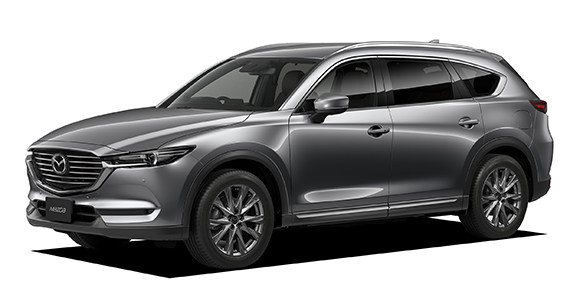
Mazda’s CX-8 is a three-row mid-size SUV that has become increasingly popular thanks to its impressive performance, luxurious comfort, and stylish design. But, as with any vehicle, proper maintenance and understanding of your Mazda CX-8’s components are crucial for optimal performance. One such vital component is the wheel and tire system.
Before we delve into the specific wheel specs of the Mazda CX-8, let’s cover some basic terminology that will be helpful throughout this guide.
Contents
Understanding Wheel and Tire Specifications
For the uninitiated, wheel and tire specifications might seem like a complex sea of numbers and abbreviations. However, understanding these parameters is easier than you might think! Here are some fundamental terms:
- Rim Size: This is the diameter of the wheel, measured in inches, where the tire sits.
- PCD (Pitch Circle Diameter): PCD is the diameter of the imaginary circular line that passes through the center of the wheel’s bolt holes. It is usually defined by the number of studs (or holes) and the diameter measurement (in mm).
- Thread Size (Bolt Pattern): The bolt pattern or thread size refers to the diameter of the imaginary circle formed by the centers of the wheel lugs.
- Offset: The wheel offset is the distance from the wheel’s mounting surface to the center line of the wheel.
- Lug Nut Torque Specs: This specification refers to the amount of force used to tighten the lug nuts on the wheel’s studs. It’s typically measured in foot-pounds (ft-lbs) or Newton meters (Nm).
- Tire Size: This refers to the width, aspect ratio, and diameter of the tire.
- Tire Pressure: This is the amount of air in the tire that provides optimal performance, measured in pounds per square inch (PSI) or bar.
Now that we’ve covered the basics, let’s move on to the Mazda CX-8 specific wheel and tire specifications.

Mazda CX-8 Wheel Specifications
The Mazda CX-8 has undergone several updates since its inception, each with potentially different wheel specs. The table below provides a summary of wheel specs for various Mazda CX-8 models and generations.
| Year | Trim | Rim Size | PCD | Thread Size | Offset | Lug Nut Torque |
|---|---|---|---|---|---|---|
| 2022 – … | CX-8 Sport | 17×7.0 | 5×114.3 | M12 x 1.5 | 45 | 108 Nm / 80 ft-lbs |
| 2022 – … | CX-8 Touring | 19×7.0 | 5×114.3 | M12 x 1.5 | 45 | 108 Nm / 80 ft-lbs |
| 2022 – … | CX-8 Grand Touring | 19×7.0 | 5×114.3 | M12 x 1.5 | 45 | 108 Nm / 80 ft-lbs |
Please note, this table is not exhaustive. Always refer to your vehicle’s manual or consult your dealership for the most accurate information.
Mazda CX-8 Tire Specifications
Along with wheel specifications, knowing the correct tire specs for your Mazda CX-8 is essential. Tire specs vary based on trim levels and can also change year by year. Here are the tire specifications for different Mazda CX-8 models:
| Year | Trim | Tire Size | Tire Pressure (Front) | Tire Pressure (Rear) |
|---|---|---|---|---|
| 2022 – … | CX-8 Sport | 225/65R17 | 35 PSI / 2.4 Bar | 35 PSI / 2.4 Bar |
| 2022 – … | CX-8 Touring | 225/55R19 | 36 PSI / 2.5 Bar | 36 PSI / 2.5 Bar |
| 2022 – … | CX-8 Grand Touring | 225/55R19 | 36 PSI / 2.5 Bar | 36 PSI / 2.5 Bar |
Again, always check your vehicle’s manual or consult your dealership for the most accurate information.
How To Maintain Your Mazda CX-8 Wheels and Tires
Maintaining your wheels and tires is critical to ensuring a smooth, safe, and efficient ride. Here are some tips for Mazda CX-8 owners:
- Check Tire Pressure Regularly: Tires naturally lose air over time. So, checking the tire pressure at least once a month using a reliable tire pressure gauge is crucial. Always refer to the recommended tire pressure in your vehicle’s manual.
- Rotate Your Tires: Regular tire rotation (typically every 5,000 to 7,500 miles) helps ensure even tire wear, extending the lifespan of your tires and improving handling.
- Balance Your Wheels: Unbalanced wheels can lead to uneven tire wear and vibrations. It’s recommended to have your wheels balanced each time you get new tires or when a tire is repaired.
- Check Alignment: Poor alignment can lead to premature tire wear and can affect handling. It’s advisable to have your alignment checked annually, after hitting a large pothole or curb, or when you notice uneven tire wear.
